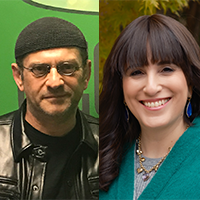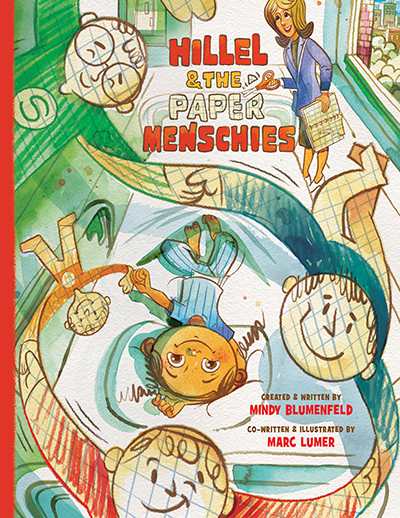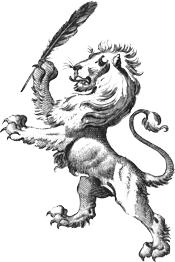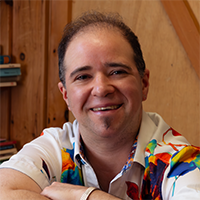 Hillel and the Paper Menschies
Hillel and the Paper Menschies
A cross between a picture book and a paneled graphic novel for kids, Hillel and the Paper Menschies depicts a young boy's recovery from a brain tumor in a reassuring, accurate, and age-appropriate way. Author Mindy Blumenfeld situates the story in an Orthodox Jewish community whose specificity adds realism and a home-like atmosphere. Co-author and illustrator Marc Lumer brings the characters to life with warm colors and dynamic poses. The all-caps comic book font is a perfect match and always legible in its placement within the illustrations. In short, the visual execution is flawless.
Little Hillel stays home sick from school one day with a mysterious illness that necessitates a trip to the hospital, and then an MRI. When he's scared to go into the big tube all by himself (as who wouldn't be?), his mother draws four doll-sized companions for him—Hilly, Pilly, Shimmy, and Shmaya—who are tiny and flat enough to accompany him in the machine. These little guys, the paper menschies of the title, face off against Scared, Sad, and Mad, emotion critters in colorful Teletubby-like suits, who pop up regularly during Hillel's tests, brain tumor operation, and recovery. What a great way for kids in tough situations to visualize their feelings and start thinking about creating their own internal team of helpers.
Lumer is skilled at using visual cues to set off different phases of the action. Fantasy and reality may coexist within the same panel, but are easy to distinguish; for instance, the paper menschies have flat color and faint graph-paper lines, while the flesh-and-blood characters have three-dimensional, rounded shading. Cool greens and blues predominate in the hospital scenes, while Hillel's neighborhood has warmer red and brown background tones. His home base is populated wholly by Orthodox families, whereas the hospital world is ethnically and religiously diverse. I liked the detail of a turbaned man and a Black man with dreadlocks sitting with Hillel and his mom in the MRI waiting room. "This is a world outside mine, but still friendly" is the message conveyed throughout.
To celebrate Hillel's recovery, his parents take him on a trip to Israel, where they give thanks by inserting a written prayer into the Wailing Wall. I know, criticizing an Orthodox Jewish book for being implicitly Zionist is like complaining that McDonald's serves fried food—it's part of the brand. But it was disquieting to think about who is automatically depicted as entitled to inhabit certain spaces, and who is left off the page. A Palestinian family might find themselves blocked from a similar pilgrimage to Muslim holy sites in Jerusalem. But young readers won't think about that because they aren't there. Only Western tourists, Orthodox Jews, and Israeli soldiers appear in the illustration.
Some insider language could limit the book's appeal to non-Orthodox readers. For instance, they might not know that a mensch is Yiddish for a helpful, moral person, or that Hashem means "God" (literally "the Name" because observant Jews consider the indirect title more respectful). An asterisk with a definition could have easily been worked into the page design, as the authors did when Hillel referred to the Wailing Wall as the Kotel.
No book is perfect, but Hillel and the Paper Menschies truly succeeds where a lot of "issues" books for young readers fail. The story strikes the right balance between adult help and learning to solve your own problems. Its world is fun to inhabit and its lessons can be applied by kids facing anxious situations of all kinds.
Read an excerpt from Hillel & The Paper Menschies (PDF)
Buy this book on Amazon and Israel Bookshop Publications.








